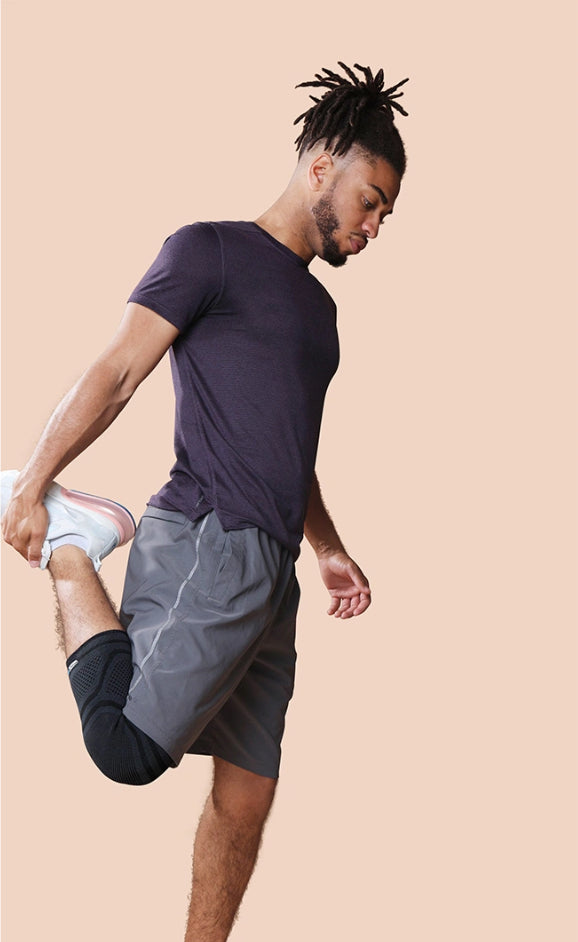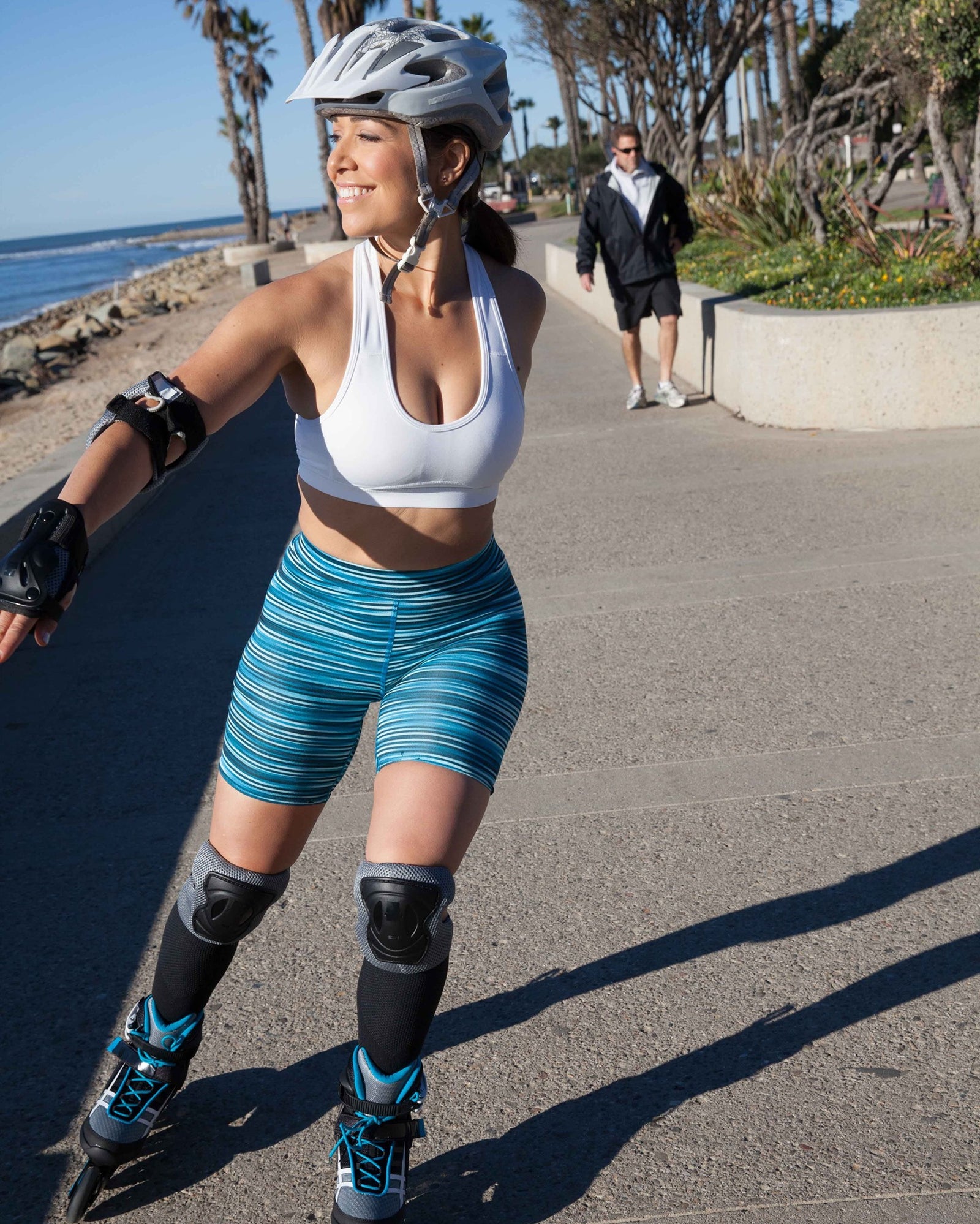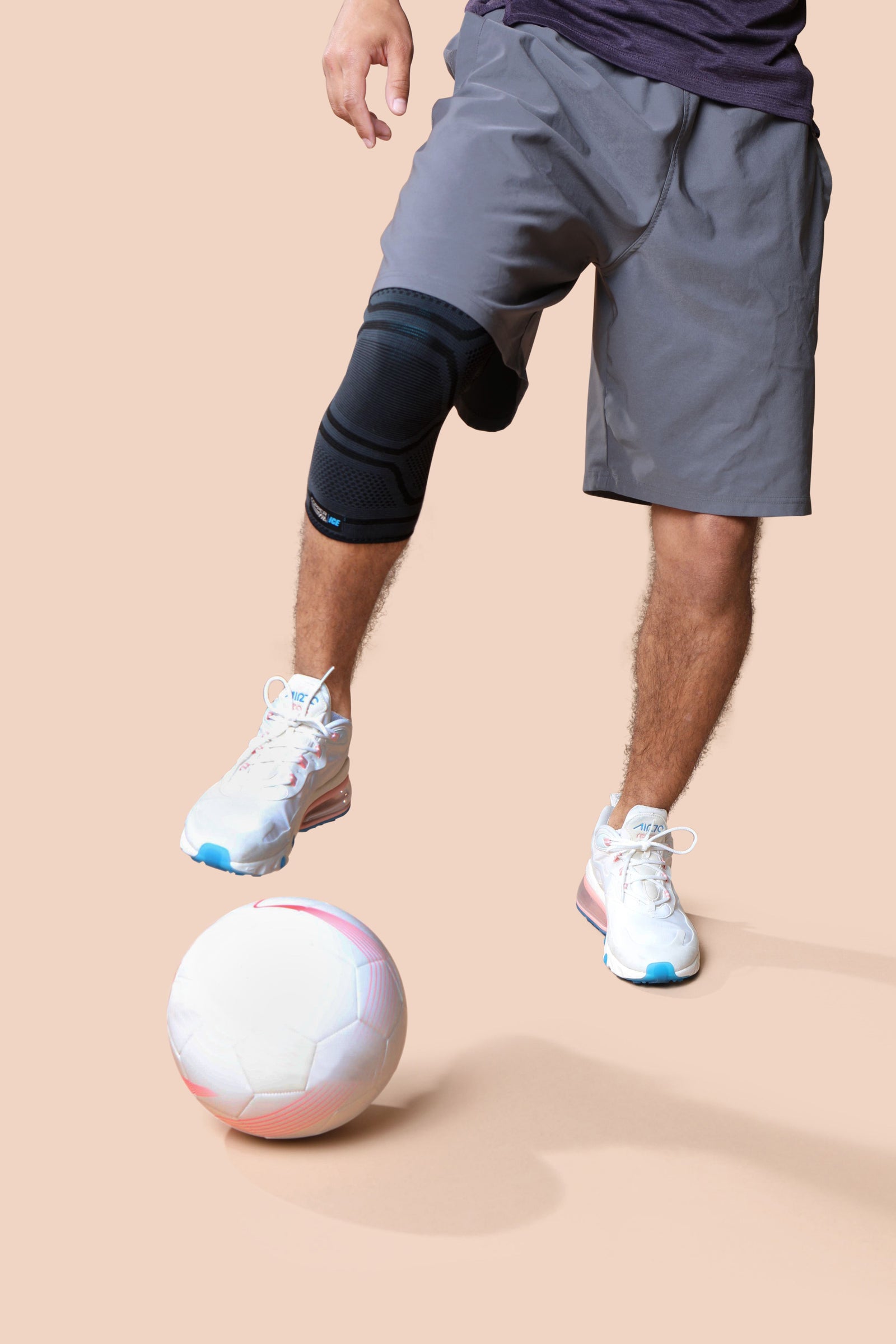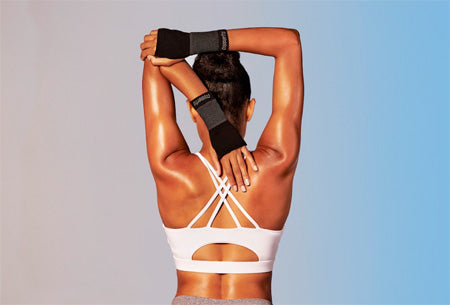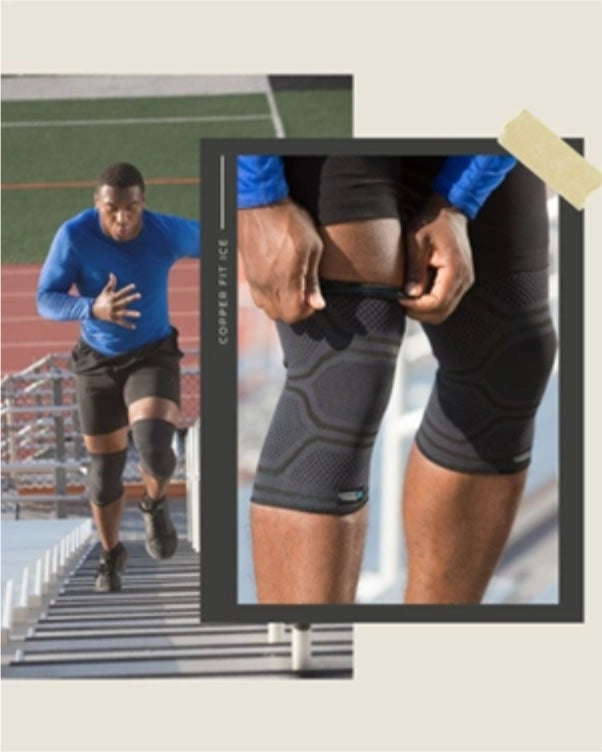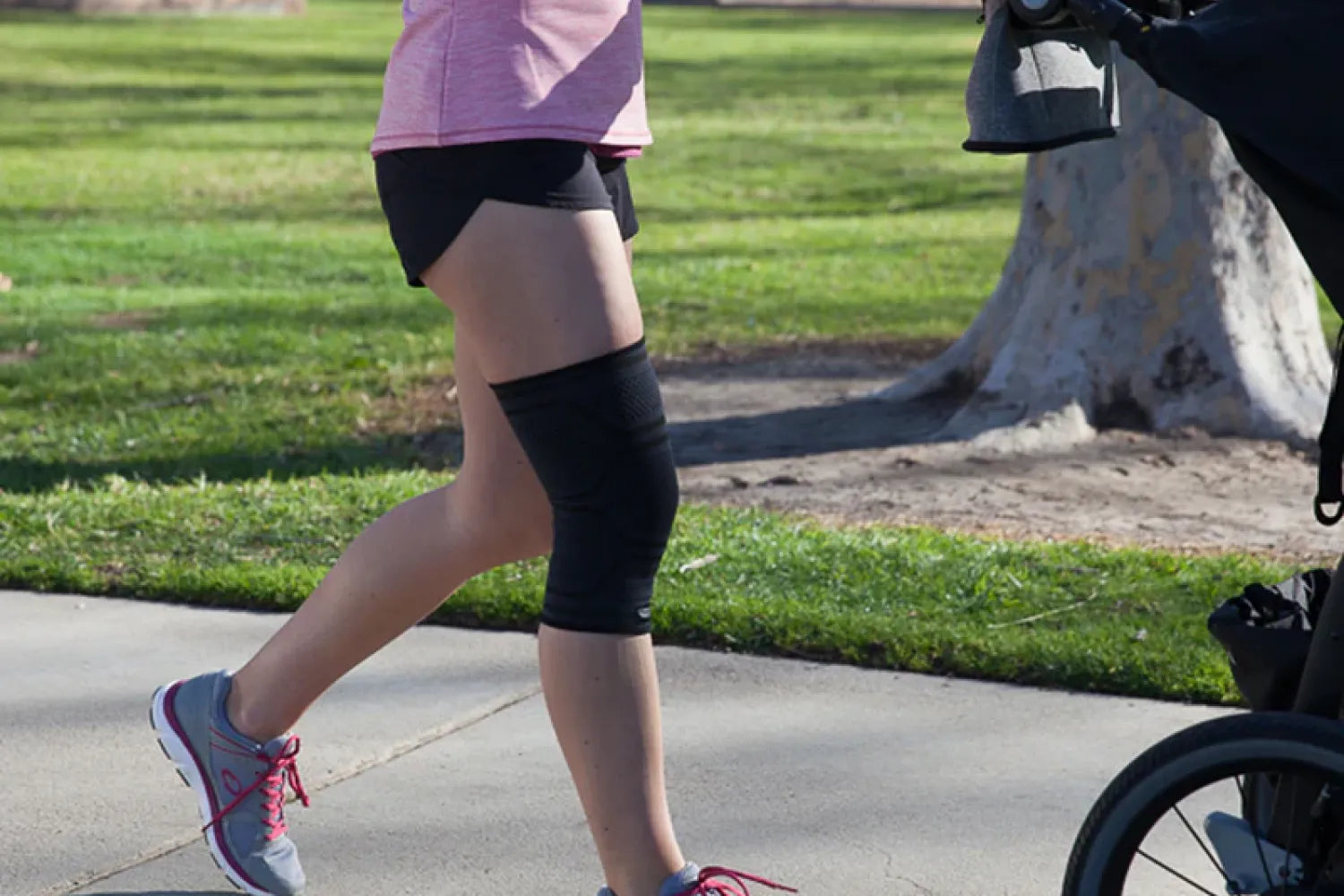
Key Takeaways
- Runner’s knee is a common cause of knee discomfort in runners, often linked to overuse, poor movement patterns, or muscle imbalances.
- Recovery strategies like strength training, cold therapy, and compression can help support mobility and ease soreness.
- Preventive tips, such as gradual mileage increases, proper warm-ups, and supportive gear, can help reduce the risk of runner's knee in the long term.
There are so many incredible things to love about running: the way it gets your heart pumping and endorphins flowing, the view of the world around you as you fly on by, the sense of strength and accomplishment that fills you after hitting a new best time or reaching a new length.
But, if you’ve ever felt a nagging discomfort around your kneecap after a long run or during a steep downhill route, it may be getting in the way of what should be a joy-filled run. Runner’s knee is one of the most common issues runners face, and while it can be frustrating, it’s also manageable.
Whether you're training for a race or just enjoy logging miles on the weekends, understanding what causes runner’s knee and how to manage it can make a big difference in how you feel and perform.
What Is Runner’s Knee?
Runner’s knee is a common and frustrating challenge for many runners, both new and experienced. Technically known as patellofemoral discomfort, it refers to a sensation around or behind the kneecap, especially during or after activities like running, climbing stairs, squatting, or sitting with bent knees for long periods.
The discomfort often builds gradually and can interfere with training progress, but it doesn’t mean you have to give up on your goals. Runner’s knee tends to occur when the kneecap doesn’t track properly along the femur (thigh bone) during movement.
Repetitive stress, muscle imbalances, or poor biomechanics are often at the root. If you’ve ever felt soreness in the front of your knee that seems to worsen after long runs or downhill routes, you might be dealing with runner’s knee.
What Causes Runner’s Knee?
There isn’t one single cause for runner’s knee. Usually, it’s a combination of mechanical and muscular issues that place extra strain on the knee joint.
Here are some of the most common contributors:
- Overuse: Increasing mileage or intensity too quickly without giving the body time to adapt.
- Weak hips and quads: When the muscles around your hips and thighs aren’t pulling their weight, your knees often absorb the extra load.
- Poor movement patterns: This includes overpronation (when your feet roll inward) or tight hamstrings that affect stride mechanics.
- Lack of recovery: Without enough time to rest, the repetitive strain of running can lead to a buildup of tension and discomfort.
- Improper footwear: Worn-out or unsupportive shoes can shift the impact to the knees instead of absorbing it properly.
Runner’s knee is a signal that something in your kinetic chain needs attention. The good news? With awareness, strength training, and a few smart changes, you can support your body more effectively.
Who’s at Risk for Runner’s Knee?
While anyone can experience runner’s knee, some people are more likely to develop it. Risk factors include:
- New runners or those returning after a long break
- Runners who are increasing mileage or intensity too fast
- Individuals with weak hip abductors or core muscles
- People with a history of lower-body discomfort or instability
- Those who train on hard or uneven surfaces regularly
- Wearing shoes that no longer provide proper support
You don’t have to fit all these categories to develop runner’s knee. Even seasoned runners can find themselves dealing with this type of discomfort if something is off in their movement or recovery routine.
When To Slow Down or Modify Your Routine
It’s not always easy to know when soreness is a normal part of training or a sign you need to adjust.
If you notice any of the following, it might be time to scale back temporarily:
- Knee discomfort that continues after runs or worsens during certain activities
- A feeling of instability in the knee joint
- Tenderness or pressure behind the kneecap
- Increased discomfort with downhill running or stairs
Taking a short break, switching to lower-impact activities, or incorporating recovery strategies can help support your body before the issue gets worse.
Tips To Support Your Recovery
The key to managing runner’s knee is building a smarter, more balanced approach to movement and recovery.
Here are effective ways to help soothe discomfort and promote muscle relaxation:
1. Rest and Active Recovery
Complete rest isn’t always necessary, but temporarily reducing impact activities gives the joint a chance to recover. Opt for joint-friendly activities like walking, swimming, or yoga to maintain activity while lowering stress on the knees.
2. Strength Training
Targeted exercises for the glutes, hips, hamstrings, and quads can help rebalance your movement and take pressure off your knees. Exercises like clamshells, bridges, lunges, and step-ups are especially helpful.
3. Gentle Stretching
Tight muscles can pull on the knee joint and alter alignment. Focus on stretching the calves, hamstrings, hip flexors, and IT band with consistency.
4. Use of Hot and Cold Therapy
Cold therapy is often helpful shortly after activity or when tension feels recent. Heat therapy can help with lingering muscle tightness or stiffness when the discomfort isn’t new. Using hot or cold wraps that conform to your body and allow mobility can make this easier to integrate into daily life.
5. Try Compression Sleeves
Gentle compression may help support circulation and muscle relaxation. Runners often use compression socks or compression sleeves around the knees or thighs to feel more supported during runs and recovery sessions.
6. Massage and Recovery Tools
Using a deep-tissue massage gun or foam roller can target areas of tightness. Focus on surrounding muscle groups to ease tension in the kinetic chain and support recovery.
Prevention Tips Every Runner Should Know
Prevention starts with consistency, not perfection. Even small changes to your routine can go a long way in helping prevent discomfort from creeping in.
- Warm-Up With Purpose: Jumping straight into a run without preparing your body is one of the quickest ways to overload your joints. Take five to 10 minutes to activate your hips, glutes, and calves with dynamic stretches or mobility drills.
- Cross-Train: Incorporate non-running workouts into your week to build strength and give your joints a break. Resistance training, cycling, yoga, and swimming all help build total-body stability.
- Follow the 10% Rule: Don’t increase your mileage or intensity more than 10% per week. It helps your body adapt without pushing too far, too soon.
- Mind Your Footwear: Make sure your running shoes match your gait and are still in good condition. Most running shoes last 300 to 500 miles before their support starts to break down.
- Listen to Early Signs: Don’t ignore slight twinges or tightness. Addressing them early with rest, stretching, or light activity can prevent them from becoming longer-term issues.
- Use Supportive Gear Strategically: Compression gear can be helpful during long runs or recovery sessions to help ease muscle soreness and support healthy blood flow.
When To Get Professional Support
If runner’s knee continues despite rest and recovery efforts, it may be time to check in with a professional. Athletic trainers, physical therapists, or running coaches can evaluate your movement patterns, strength, and flexibility to help identify contributing factors.
Persistent discomfort that interferes with daily activity or lasts beyond a few weeks may benefit from a personalized recovery plan.
FAQ
Can you keep running with runner’s knee?
It depends on the severity. Some light activity may still be okay, but it's important to scale back and avoid pushing through sharp or worsening discomfort. Prioritize recovery and consider switching to lower-impact movement temporarily.
What’s the fastest way to recover from runner’s knee?
Recovery varies, but the most effective approach includes rest, strength training, stretching, supportive gear, and smart use of hot or cold therapy. There’s no instant fix, but consistent care helps speed things up.
How do I know if it’s runner’s knee or something else?
Runner’s knee usually involves discomfort around or behind the kneecap and tends to worsen after running, squatting, or sitting for long periods. If the discomfort feels sharp or occurs with swelling, it’s best to speak to a healthcare professional.
The Bottom Line
We know what it’s like when you can’t move the way you want to. The frustration, disruption to your routine, and feeling of being held back by soreness are all tough to manage. That’s why we design flexible and breathable compression gear that supports what your body is already trying to do: recover, stay mobile, and keep moving forward.
Whether you’re getting ready for your first 5K or hitting new milestones after years of running, you deserve tools that work as hard as you do. Our mission has always been to help people move better and feel stronger, with less discomfort and more confidence.
If you’re navigating runner’s knee, remember: you don’t have to power through it alone. With the right support, you can ease tension, build strength, and get back to doing what you love one step at a time.
Sources:
Patellofemoral Pain Syndrome (PFPS): Symptoms & Treatment | Cleveland Clinic
The best types of exercise when you have hip or knee pain | Harvard Health
Stretches and Exercises to Strengthen Your Knees, from a PT | HSS

